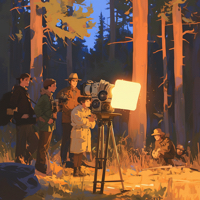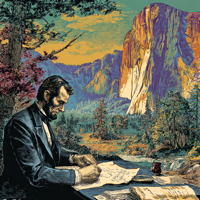
On this day in 1814 Galen Clark was born in Shipton, Canada East (now known as Quebec).
As a young man, he became part of the great westward migration. He first headed to Missouri, where he met his wife Rebecca McCoy, who bore him two daughters. Unfortunately, his wife waste die far too young.
It’s believed that after her death, Galen moved further to the west, settling in California during the Gold Rush to seek his fortune. After living in the Golden State for five years, Clark contracted tuberculosis at the age of 39. Consumption was a fatal diagnosis in 1853, as there was no course of treatment or antibiotics at the the time. Doctors gave him six months to live, and recommended rest and clean air.
Galen moved to Wawona, California – a small ‘census designated place’ located entirely within what would eventually become Yosemite National Park – in 1855.
“I went to the mountains to take my chances of dying or growing better, which I thought were about even.” Galen Clark.



 On this day in 1864 President Lincoln signed a bill drafted by both houses of the 38th Congress of the United States officially creating the Yosemite Grant. While Yellowstone ultimately became the first National Park, this was the first instance of park land being set aside for preservation and public use by the federal government. The grant was the result of citizens like Galen Clark and Senator John Conness advocating heavily for protection of the area. John Muir later led a successful movement to establish a larger national park encompassing not just the Yosemite Valley, but surrounding mountains and forests as well.
On this day in 1864 President Lincoln signed a bill drafted by both houses of the 38th Congress of the United States officially creating the Yosemite Grant. While Yellowstone ultimately became the first National Park, this was the first instance of park land being set aside for preservation and public use by the federal government. The grant was the result of citizens like Galen Clark and Senator John Conness advocating heavily for protection of the area. John Muir later led a successful movement to establish a larger national park encompassing not just the Yosemite Valley, but surrounding mountains and forests as well.